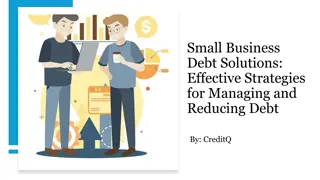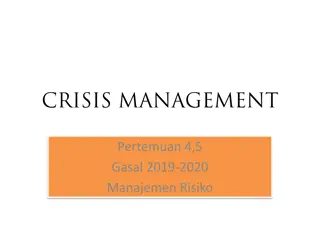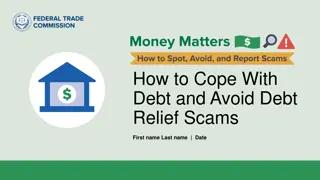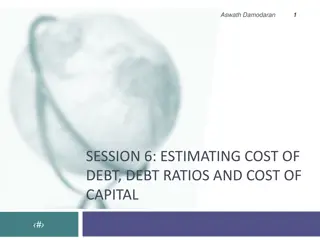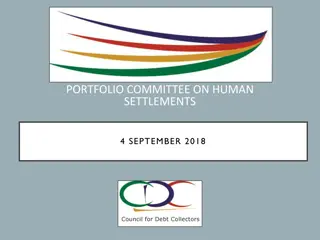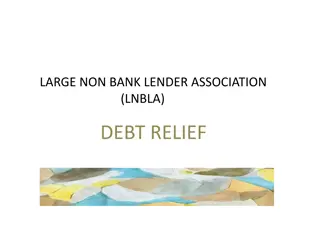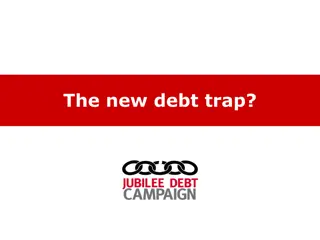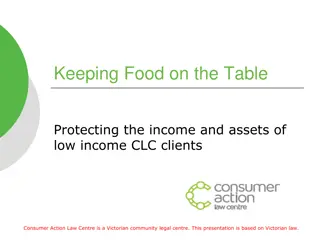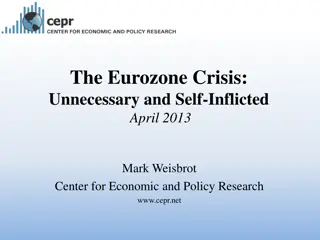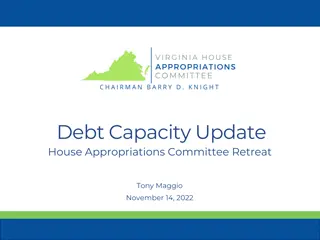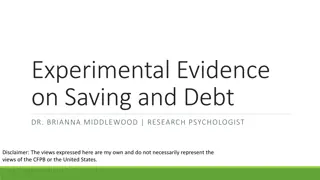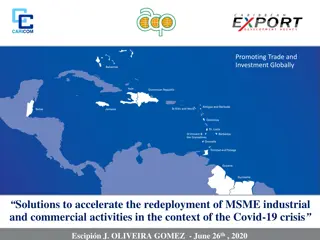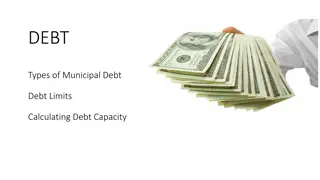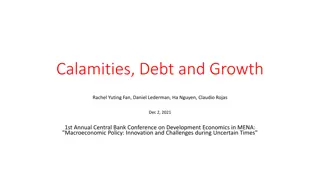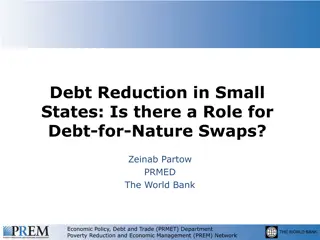Addressing Energy Debt Amid Covid-19 Crisis
Energy debt poses a significant challenge for consumers and the industry, with immediate actions needed to alleviate financial vulnerability during the ongoing pandemic. Learn about key initiatives and steps to support vulnerable customers and ensure financial stability in the energy sector.
Download Presentation

Please find below an Image/Link to download the presentation.
The content on the website is provided AS IS for your information and personal use only. It may not be sold, licensed, or shared on other websites without obtaining consent from the author. Download presentation by click this link. If you encounter any issues during the download, it is possible that the publisher has removed the file from their server.
E N D
Presentation Transcript
Safeguarding Customers Working Safeguarding Customers Working Group Group
Update on our response to Update on our response to Covid Covid- -19 19 Working to raise awareness of the support available Ensuring the energy industry s response to protecting vulnerable energy consumers during to Covid-19 is comprehensive and consistent Ensuring Ofgem follow through with plans to address self-disconnection Ensuring the UK Government consider ways of targeting support using Shielding Data Ensuring the UK Government consider ways of reducing energy debt Continuing our Warm Home Discount campaign Influencing the UK Government s Covid-19 Stimulus Working on assessing the impact of the crisis within this years Fuel Poverty Monitor, to be released in September
The Gathering Storm The Gathering Storm dealing with energy debt dealing with energy debt Even before the crisis, energy debt was a significant issue for customers and the energy industry In 2019, Ofgem reported that 1.3 million electricity customers and 1 million gas customers are repaying a debt to their energy supplier or are in arrears, figures that rose from the preceding year In 2017, energy arrears amounted to 1.065 billion in total for Great Britain. In the same year, water arrears reached a total of 2.2 billion. The impact of utility debt will badly affect customers health, wealth and well-being It will also impact companies financial viability and be an on-going day- to-day drag on the economy, with money that could normally go towards paying for other goods or services to boost the economy, instead being used to pay off household debts NEA s new paper highlights immediate actions to address these issues See: https://www.nea.org.uk/wp- content/uploads/2020/06/Th e-Gathering-Storm-Utility- Debt-and-Covid-19-June- 2020.pdf
Immediate steps. Immediate steps . Highlight the opportunity and support the case for utility suppliers to access the shielded patients list (SPL) to directly provide debt relief assistance and wider support. Utility suppliers should proactively contact their most indebted vulnerable customers Priority Services Registers (PSR) should include a specific financial vulnerability flag or needs code Ofgem must strengthen the monitoring and support arrangements for those at risk of self-disconnection What counts as an emergency issue must be clearly set out Consistent ability to pay principles within licence conditions across sectors
Why is a financial vulnerability needs code necessary? Why is a financial vulnerability needs code necessary? A major anomaly with the current supplier PSR is that it fails to capture financial vulnerability in a consistent way Pressing issue before the Covid-19 crisis but is even more urgent Temporary needs code used in an ad-hoc way by some suppliers for capturing some financial information (such as whether a customer has recently lost their job, been furloughed etc) but practices vary considerably from supplier to supplier. Variance is at odds with standardising PSR and develop common messaging about what support it can provide Resulting in clients having to give the same, often very sensitive, information about their financial circumstances every time they call their supplier. This can cause a lot of mental distress and is very time consuming (esp if they are paying for the call).
Proposed solution Proposed solution This could be resolved by creating a new discrete Financial Vulnerability needs code. This includes some of the current transient categories that are being used on ad-hoc basis (furloughed, Universal Credit), alongside others like long-term unemployed, severely indebted etc. Temporary - Life changes Furloughed Universal Credit Redundancy Bereavement New Financial vulnerability Long-term unemployed Severely indebted In receipt of pension credit Warm Home Discount recipient Benefits including PIP, Carers Allowance
Two other recommendations.. Two other recommendations .. Common definition (either within the energy sector or across different utilities) for severe indebtedness . Enhanced needs pathways for customers who have multiple vulnerabilities (essentially an escalation of their priority, where extra care and attention is paid around every interaction with them; inbound calls, any outbound communication or the offer of or the provision of direct support services).
Any questions/comments & discussion on next steps Any questions/comments & discussion on next steps











